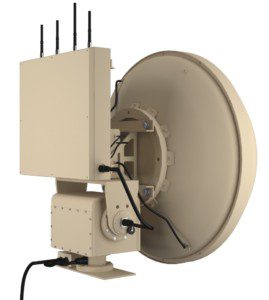Ground Stations for UAVs
Ground stations for UAVs, or ground control stations for UAVs are land-based communications and control systems typically used for direct piloting and communication between the crew and a UAV. These ground control systems typically allow for both piloting of the craft and streaming live video and data. Ground stations for UAVs are a large part of a new era of long-range aerial data gathering. As UAVs continue to provide existing and burgeoning industries with the advantages of aerial photography and videography, they increasingly become a larger part of our aviation landscape. However, as UAVs evolve in their applications, it’s necessary for their ground control systems (GCS) to evolve alongside them. By providing remote pilots with a broadband link via a tracking antenna, a virtual cockpit to see real-time flight data and adjust flight paths, and real time video streaming, UAV ground stations gives operators enhanced control and operability when deploying unmanned and autonomous aerial vehicles.

UAV Ground Control Stations function as an integrated system with a tracking antenna and radio, mobile computer, and piloting joystick. Typically, most ground stations are mobile and are either built into transit cases, or feature quick setup solutions, such as heavy duty tripods. The ground station communicates with the UAV using either an omnidirectional or directional wireless link. Typically this wireless link runs on unlicensed spectrum. This allows operators to obtain real-time data on the UAVs position and performance. By allowing remote pilots the ability to have a virtual cockpit, they can more safely and securely navigate the UAV. In addition to controlling a UAV in flight, GCS can also be used to monitor live video streaming from UAV cameras. This makes GCS integral in defense and law enforcement applications. With the ability see what the UAV sees in real time, operators on the ground are able to reorganize, adjust deployments, and protect assets, taking the guesswork out of reconnaissance and search and rescue missions.
There are multiple types of Ground Control Station units in both desktop and smartphone configurations. Different types of drones typically require different GCS. For example, ready-to-fly drones, the type most commonly flown by civilians, can enjoy the ease of the intuitive GCS platforms that operate on smartphones and tablets. However, DIY and kit drones generally require a more comprehensive form of GCS. Because these drones work best on platforms with access to configuration or analytics tools, desktop GCS applications are a better fit.
Ground Control Stations (GCS) are an integral component to successful drone piloting. From their ability to ease flight operation to their video-monitoring capabilities, GCS help position UAVs as a new frontier for aerial-based missions for a variety of operators, from hobbyists, to business owners, to law enforcement and defense.